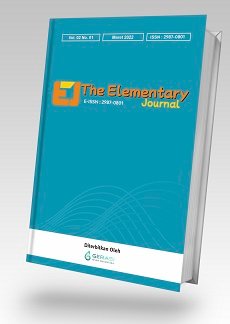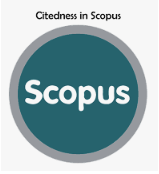The USE OF AUDIO VISUAL MEDIA IN MATHEMATICS SUBJECTS TO IMPROVE CRITICAL THINKING OF STUDENTS
DOI:
https://doi.org/10.56404/tej.v1i2.64Keywords:
Media audio visual, matematika, berpikir kritisAbstract
Students in learning mathematics often only focus on memorizing formulas. This causes students' critical thinking skills to not develop optimally. The ability to think critically is very important for the lives of students because with it students will be able to solve the problems they face by taking or making effective decisions. The purposes of this study are (1) to describe the implementation of audio-visual media in mathematics to improve critical thinking in class 4 MI Podorejo Tulungagung? (2) Describe the inhibiting and supporting factors in the use of audio-visual media to improve critical thinking for class 4 MI Podorejo Tulungagung? (3) Describe the impact of using audio-visual media on increasing critical thinking in class 4 MI Podorejo Tulungagung. This study uses a qualitative approach. The research location is in MI Podorejo Tulungagung. This study uses a qualitative approach. Data collection techniques used are observation, interviews, and documentation. The data validation technique uses source triangulation and technical triangulation methods. The data analysis technique used is Miles and Huberman's data analysis with data condensation steps, data presentation, and drawing conclusions. The results of this study indicate that the implementation of audio-visual media using learning animation videos starts from the teacher preparing the equipment, conditioning the class, and students analyzing the video content, besides that the teacher also uses various methods such as question and answer, demonstrations, lectures. Factors that support the use of audio-visual media are adequate facilities and infrastructure, enthusiastic students, and high teacher professionalism. Meanwhile, the inhibiting factor for using audio-visual media in increasing critical thinking is that students lack self-confidence even though they have the right answers. The impact of using audio-visual media is that students have motivation and to learn so that critical thinking skills and student learning outcomes increase.
References
Astuti, Yeni Dwi. 2023. “Profil Pelajar Pancasila Sebagai Upaya Mewujudkan Identitas Nasional Era Revolusi Industri 4.0.” Jurnal Pendidikan West Science 1 (02): 133–41. https://doi.org/10.58812/jpdws.v1i02.221.
Daffa Tegar A Lubis. 2023. “PEMBENTUKAN KARAKTER MELALUI PENGAMALAN NILAI-NILAI PANCASILA DI SMPN 28 MEDAN.” Krepa: Kreativitas Pada Abdimas 1 (8): 1–10.
Dyahningtyas, Eka Putri, Diki Rahmawan, Dwi Arif Rosanti, Dewi Indah, Galuh Isbiyantari Putri, Riska Tri Wijaya, Silviana Bilqis Setiawan Putri, Wenny Indah Ardhita, and Nurhayati Ganinda. 2023. “Implementasi Projek Penguatan Profil Pelajar Pancasila Bertema Demokrasi pada Tahun Politik di SMPN 1 Mojosari” 2 (1): 1–9. https://doi.org/10.55606/jubpi.v2i1.2255.
Fadlan Najhan Ikhwany, Nur Rafizah, Aqwamith Thariq, and Ahmad Alfian. 2022. “MEDIA PANCASILA SEBAGAI PENGUATAN KARAKTER SISWA UNTUK MENGHADAPI ISU ISU DI ERA GLOBALISASI.” Prosiding Seminar Nasional Pendidikan Guru Sekolah Dasar 2 (1): 97–108. https://doi.org/10.25134/prosidingsemnaspgsd.v2i1.31.
Hastiani, Hastiani, Hendra Sulistiawan, and Mudafiatun Isriyah. 2023. “Sosialisasi Pentingnya Kolaborasi Orang Tua dalam mendukung Penerapan Projek Penguatan Profil Pelajar Pancasila (P5).” Jurnal Pengabdian Multidisiplin 3 (1): 31–35. https://doi.org/10.51214/japamul.v3i1.592.
Lembong, Jelly Maria, Harol Reflie Lumapow, and Viktory Nicodemus Joufree Rotty. 2023. “Implementasi Merdeka Belajar Sebagai Transformasi Kebijakan Pendidikan.” Jurnal Educatio FKIP UNMA 9 (2): 765–77. https://doi.org/10.31949/educatio.v9i2.4620.
Maghfirani, Raudya Tuzzahra, and Siti Romelah. 2023. “Implementasi Nilai Kebhinekaan Global Dalam Profil Pelajar Pancasila Untuk Menghadapi Krisis Identitas Nasional” 1 (5): 100–108. https://doi.org/10.51903/bersatu.v1i5.327.
Mursidawati. 2023. “Projek Penguatan Profil Pelajar Pancasila (P-5) Pada Kurikulum Merdeka Jenjang SMA,” May. https://doi.org/10.5281/ZENODO.8014831.
Nazarudin, Achmad. 2023. “Melestarikan Budaya Kearifan Lokal Jepara Dalam Proses Pembentukan Profil Pelajar Pancasila P5 Di Kurikulum Merdeka SDN 01 Kendeng Sidialit” 1 (3): 193–208. https://doi.org/10.59581/jipsoshum-widyakarya.v1i3.833.
Rahayu, Restu, Rita Rosita, Yayu Sri Rahayuningsih, Asep Herry Hernawan, and Prihantini Prihantini. 2022. “Implementasi Kurikulum Merdeka Belajar di Sekolah Penggerak.” Jurnal Basicedu 6 (4): 6313–19. https://doi.org/10.31004/basicedu.v6i4.3237.
Salam, Faiz, and Universitas Sultan Ageng Tirtayasa. 2023. “IMPLEMENTASI PROYEK PENGUATAN PROFIL PELAJAR PANCASILA (P5) DALAM KURIKULUM MERDEKA DI HOMESCHOOLING” 1 (1).
Seriana, Fitri Sri Wahyuningsih, Putri Khairani, and Friska Ria Sitorus. 2023. “PENERAPAN KEARIFAN LOKAL SYAIR MANOE PUCOK MELALUI PROJEK PENGUATAN PROFIL PELAJAR PANCASILA (P5).” Jurnal Bahasa Indonesia Prima (BIP) 5 (2): 108–18. https://doi.org/10.34012/bip.v5i2.3819.
Setiyaningsih, Suci, and Wiryanto Wiryanto. 2022. “PERAN GURU SEBAGAI APLIKATOR PROFIL PELAJAR PANCASILA DALAM KURIKULUM MERDEKA BELAJAR.” Jurnal Ilmiah Mandala Education 8 (4). https://doi.org/10.58258/jime.v8i4.4095.
Shofia Rohmah, Nafiah Nur, Markhamah, Sabar Narimo, and Choiriyah Widyasari. 2023. “Strategi Penguatan Profil Pelajar Pancasila Dimensi Berkebhinekaan Global Di Sekolah Dasar.” Jurnal Elementaria Edukasia 6 (3): 1254–69. https://doi.org/10.31949/jee.v6i3.6124.
Suriani, Lilis, Khairun Nisa, and Lalu Hamdian Affandi. 2023. “Pelaksanaan Projek Penguatan Profil Pelajar Pancasila Tema Gaya Hidup Berkelanjutan di Sekolah Dasar” 9 (3): 1458–63. https://doi.org/10.31949/educatio.v9i3.5111.
Ummi Inayati. 2022. “Konsep dan Implementasi Kurikulum Merdeka pada Pembelajaran Abad-21 di SD/MI.” 2st ICIE: International Conference on Islamic Education 2: 293–304.
Utami, Asih, Rukiyati, and Mulyo Prabowo. 2023. “INTERNALISASI FILSAFAT PANCASILA MELALUI PROFIL PELAJAR PANCASILA PADA KURIKULUM MERDEKA.” Jurnal Paris Langkis 3 (2): 119–28. https://doi.org/10.37304/paris.v3i2.8310.
















